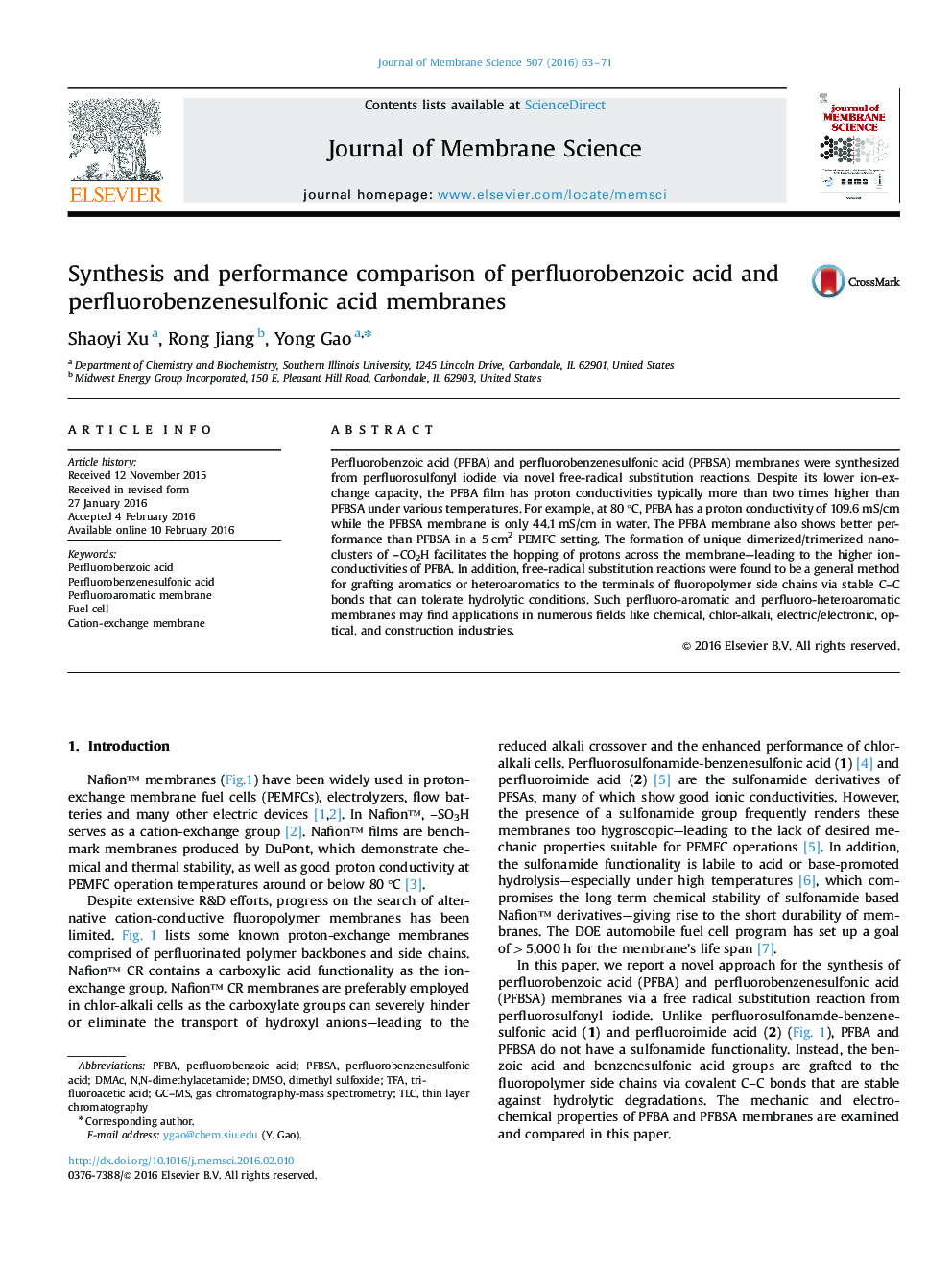| Article ID | Journal | Published Year | Pages | File Type |
|---|---|---|---|---|
| 632515 | Journal of Membrane Science | 2016 | 9 Pages |
•New materials: cation-exchange perfluoro-aromatic membranes—unknown in the literature.•Finding: despite structure similarity, –COOH film has H+ conductivity 2–3X>–SO3H.•Intellectual merit: new proof for proposed –COOH networks in carboxylate membranes.•New synthetic method: free-radical reactions for numerous fluoro-films otherwise inaccessible.
Perfluorobenzoic acid (PFBA) and perfluorobenzenesulfonic acid (PFBSA) membranes were synthesized from perfluorosulfonyl iodide via novel free-radical substitution reactions. Despite its lower ion-exchange capacity, the PFBA film has proton conductivities typically more than two times higher than PFBSA under various temperatures. For example, at 80 °C, PFBA has a proton conductivity of 109.6 mS/cm while the PFBSA membrane is only 44.1 mS/cm in water. The PFBA membrane also shows better performance than PFBSA in a 5 cm2 PEMFC setting. The formation of unique dimerized/trimerized nano-clusters of –CO2H facilitates the hopping of protons across the membrane—leading to the higher ion-conductivities of PFBA. In addition, free-radical substitution reactions were found to be a general method for grafting aromatics or heteroaromatics to the terminals of fluoropolymer side chains via stable C–C bonds that can tolerate hydrolytic conditions. Such perfluoro-aromatic and perfluoro-heteroaromatic membranes may find applications in numerous fields like chemical, chlor-alkali, electric/electronic, optical, and construction industries.
Graphic abstractFigure optionsDownload full-size imageDownload high-quality image (154 K)Download as PowerPoint slide
